Sacrow is a small town located between Berlin-Kladow and Potsdam in Brandenburg. For us, this was the starting point for a short hike through the Königswald forest along the Sacrower See lake.
By car, we took a narrow road through the forest from Kladow to Sacrow. Since we were on the road quite early, we still found a parking lot in the Fährstraße. If you can’t find one here, there is another parking lot at the end of the village.

Sacrow Palace and Gardens
Our way led us first to the Sacrow Palace and Gardens. The park is open to visitors free of charge from 8 a.m. until nightfall every day of the year.
King Friedrich Wilhelm IV acquired the Sacrow estate in 1840 for 60,000 thalers and first had the Church of the Savior built. He commissioned Lenné to design the park. From the manor house, Lenné created a visual axis that reached as far as Babelsberg. Friedrich Wilhelm IV had the existing manor house converted into a palace.

After the construction of the Berlin Wall, the inner-German border ran directly through the grounds. The garden area designed by Peter Joseph Lenné was completely destroyed by the border fortifications and the park was misappropriated by the construction of garages, dog kennels and the reconstruction of a typical border crossing point for the training of customs dogs. With the fall of the Berlin Wall, work began to restore the area. In the process, the ideas of Lenné were retained. Today the park is worth a visit at any time of the year.

Sacrow Palace is now used for events in the summer. A visit outside the events is not possible.
Address:
Park Sacrow
Krampnitzer Straße 34
14470 Potsdam
Opening hours:
daily 8 am until nightfall
Admission fee:
free

Church of the Savior (Heilandskirche) at the Port of Sacrow
In the park of Sacrow Palace, on a terrace directly on the banks of the Havel River, stands the Church of the Savior. It is part of the World Heritage Site Castles and Parks of Potsdam and Berlin.

After Friedrich Wilhelm IV acquired the Sacrow estate, he had a church built according to his ideas by the architect Ludwig Persius. The church was to be extraordinary, completely in the style of Italian churches with a free-standing bell tower (campanile). He specified a small bay as the building site, where fishermen on the Havel sought shelter during storms.
The construction was not entirely easy. Due to the building ground in the reed zone of the shore, foundations had to be made with pilasters. This was the only way the nave could project into the water. The solemn consecration of the church took place in the summer of 1844.

In August 1961, with the construction of the Berlin Wall, everything changed. The barriers of the inner-German border ran directly across the grounds of the church. The church tower was tied into the barrier wall and high concrete slabs were put up. The church building stood in “no man’s land”.
For a while, however, the church was still used for services, and Christmas Eve 1961 was also celebrated there. Only a few days later, GDR border troops devastated the church and made it unusable. They had thus created a pretext for completely sealing off the church and thus preventing possible escape attempts at this location.
The structural condition of the church deteriorated more and more in the years to come. In 1984/85, a West Berlin initiative, with the help of the Governing Mayor, succeeded in saving the building from final decay. Renovation work was allowed to be carried out on the exterior of the church.
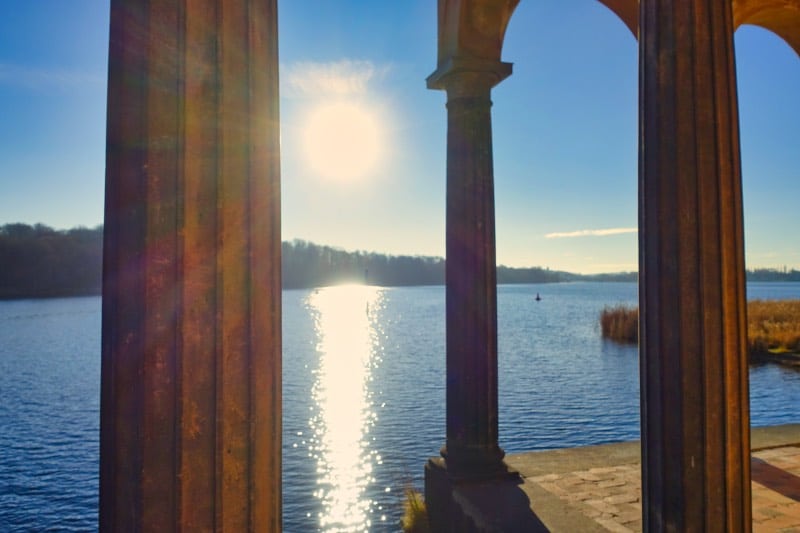
After the fall of the Wall in 1989, the first service in the Heilandskirche (Church of the Savior) after a long time took place on Christmas Eve 1989. The interior of the church was still destroyed, but in the course of extensive restoration measures, the original condition could be restored as far as possible.
The Church of the Savior is surrounded by a roofed arcade that projects into the Havel on a semicircular foundation. At the front, where the only entrance to the church is located, there are two wide sandstone pillars. On these are votive tablets with biblical quotations. The outer walls of the church are clad with yellow-pink bricks. In addition, horizontal stripes of blue-glazed and yellow-patterned tiles have been inserted, giving the church a unique appearance. I only knew the church from the water until this visit. It is a beautiful building with a unique look that made me dream of Italy.

In front of the Church of the Savior you stand on a rectangular forecourt with a semicircular bench. From here you can look out over the Havel and enjoy the beautiful view towards Potsdam.

The freestanding bell tower on the forecourt is over 20 metres high. It, too, is clad with yellow-pink bricks and additionally designed with blue-glazed and yellow-patterned tiles through the horizontal stripes. In addition, round arched openings shape the tower, and at the top it ends with an open belvedere topped by a flat tent roof. I would have liked to climb up the tower to enjoy the view over the Havel from there. Unfortunately, that is not possible.
During our hike, which led past the church, it was unfortunately closed and so we could not take a look inside. However, I was told that the interior is worth a visit.

A scientific digression:
In the summer of 1897, the physicists Adolf Slaby and Gerog Graf von Arco used the bell tower for their experiments. The first German antenna system for wireless telegraphy was built here, which succeeded in transmitting a signal over 1.6 kilometres to the other bank of the Havel.
Opening hours:
January, February, November, December:
Saturday, Sunday and public holidays 11-15.30 h
March:
Friday-Sunday 11-14.30h
April, September, October:
Tuesday-Thursday 11-15:50 h
Friday-Sunday 11-16 h
May, June, July, August:
Tuesday-Thursday 11-16 h
Friday-Sunday 11-17 h

Hike along the Sacrow Lake
After we had seen the castle park and the Heilandskirche, we started our hike through the Königswald.
The exact route can be seen very well on the map and hiked.
After a few metres along the through road (Krampnitzer Straße), the Weinmeistersteig led us directly to a signposted hiking trail along the shore of Lake Sacrow. The path is quite flat and easy to walk. We were walking in autumn and had a beautiful view of the lake through the leaf-free trees. It is certainly pleasant to walk here in summer, when the trees provide shade and the air is somewhat cooler due to the nearby water.

Shortly before the border between Brandenburg and Berlin, we left the path along the riverbank and crossed the wooded area to Krampnitzer Straße. After crossing it, we took a small path to the banks of the Havel. Here a path runs directly along the bank, which brought us back to Sacrow.

A really beautiful hike just outside Berlin.
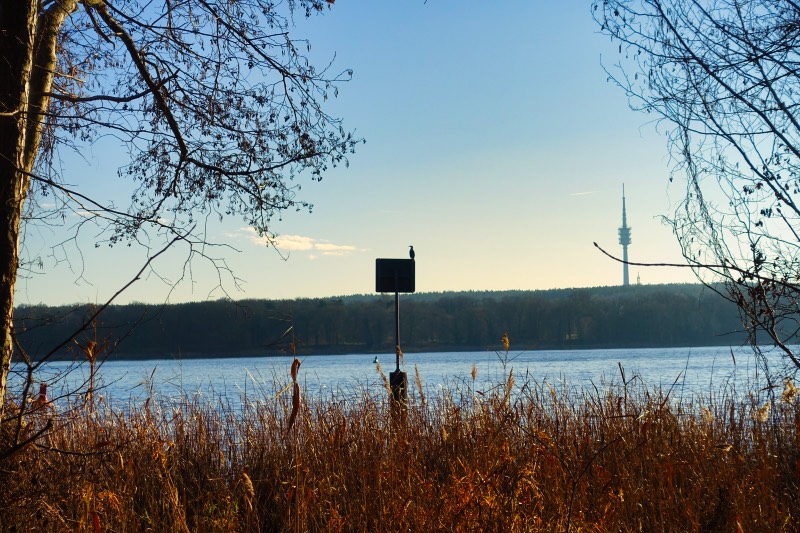

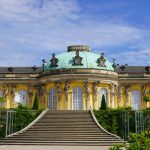

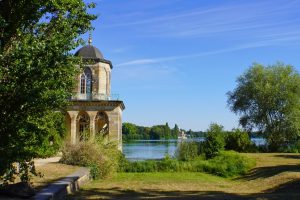



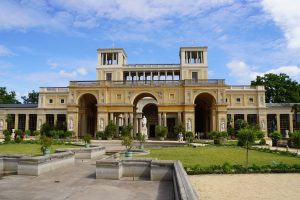








Leave a Reply